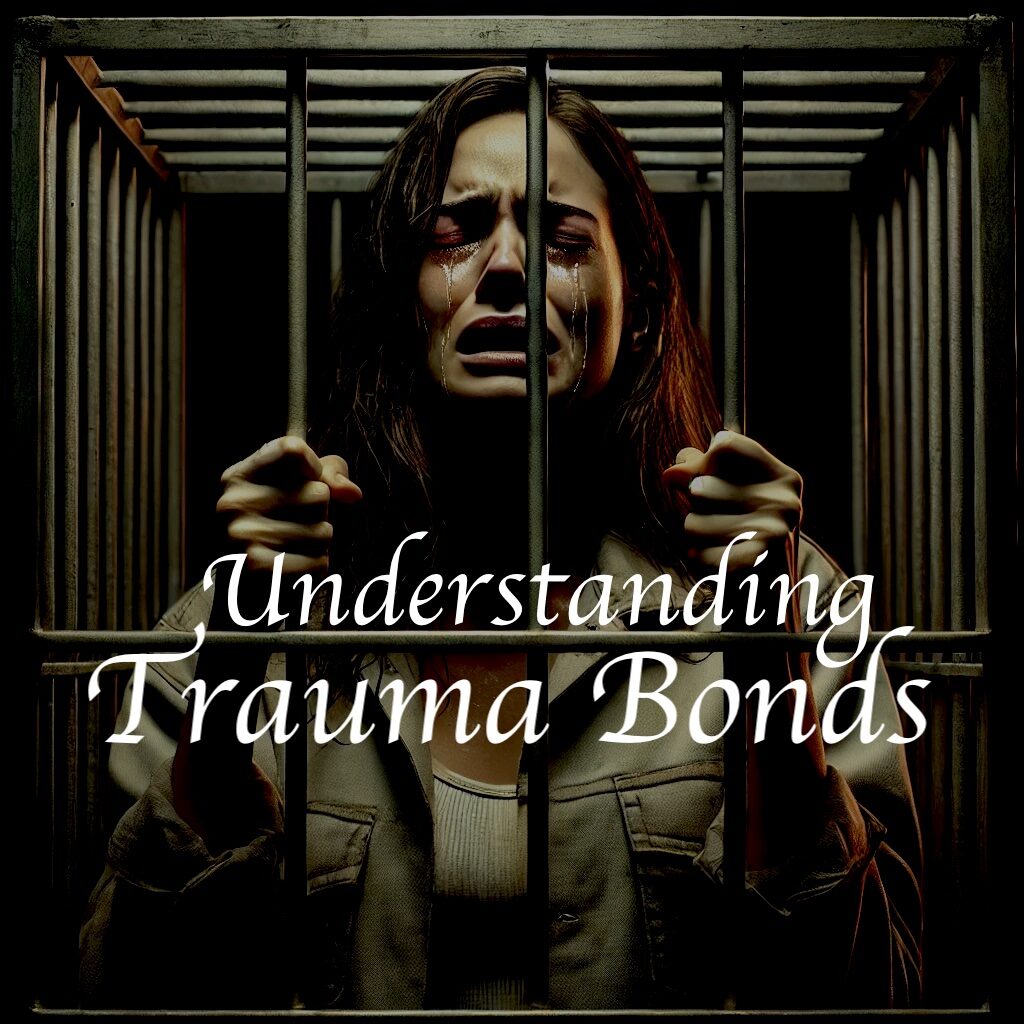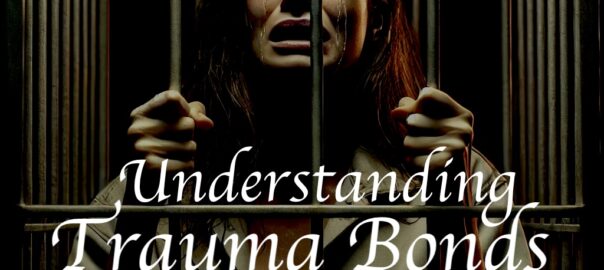What is a Trauma Bond?
A trauma bond is a deep emotional attachment that forms between a victim and their abuser, often marked by cycles of abuse and reconciliation. This bond creates a powerful, albeit unhealthy, connection that makes it extremely difficult for the victim to leave the relationship. Recognizing and understanding trauma bonds is crucial for breaking free and starting the healing process.

How Trauma Bonds Form
Trauma bonds develop through repeated patterns of abuse interspersed with periods of kindness or remorse. This cycle creates a confusing dynamic where the victim becomes emotionally attached to their abuser, mistaking manipulation for love or care.
Key Elements in the Formation of Trauma Bonds:
- Intermittent Reinforcement: The abuser alternates between abusive behavior and acts of kindness, creating an unpredictable environment that fosters dependence.
- Dependency: The victim often becomes emotionally, reliant on the abuser, making it harder to leave.
- Isolation: The abuser may isolate the victim from friends and family, deepening the victim’s dependence and reducing outside support.
- Low Self-Worth: Continuous abuse erodes the victim’s self-esteem, making them believe they deserve the treatment they receive.
- Hope and Denial: The victim clings to the hope that the abuser will change and denies the reality of the abuse.
Signs and Symptoms of Trauma Bonding
Recognizing the signs of trauma bonding is the first step towards understanding and addressing the issue. Here are some common symptoms:
- Rationalizing Abusive Behavior: Making excuses for the abuser’s actions or downplaying the severity of the abuse.
- Difficulty Leaving: Feeling an intense emotional pull to stay in the relationship, despite recognizing the harm.
- Overwhelming Loyalty: Prioritizing the abuser’s needs over your own, often feeling responsible for their emotions and actions.
- Self-Blame: Believing that the abuse is your fault and that you can fix things by changing your behavior.
- Craving Approval: Seeking validation and approval from the abuser, feeling elated when you receive positive attention.
- Confusing Love with Abuse: Equating the intensity of emotions with love, interpreting abusive behavior as care.
- Isolation from Others: Becoming increasingly isolated from friends and family, often at the abuser’s encouragement.
- Physical Symptoms: Experiencing stress-related physical symptoms like insomnia, headaches, or digestive issues.
Breaking Free from a Trauma Bond
Breaking free from a trauma bond is challenging but essential for your mental and physical well-being. Here are some strategies to help you start this journey:
- Educate Yourself: Understanding trauma bonding and the dynamics of abuse can empower you to recognize and address the issue.
- Seek Professional Help: A therapist or counselor with experience in trauma and abuse can provide invaluable support and guidance.
- Build a Support System: Reach out to trusted friends, family, or support groups. Sharing your experiences with those who understand and care about you can be incredibly validating.
- Create a Safety Plan: Develop a plan to protect yourself.
- Set Boundaries: Establish clear boundaries with the abuser, whether that means limiting or cutting off contact.
- Focus on Self-Care: Prioritize activities that nurture your physical and emotional health, such as exercise, hobbies, and relaxation techniques.
- Challenge Negative Thoughts: Work on recognizing and challenging the negative beliefs that have developed as a result of the abuse.
- Document Everything: Keep a detailed record of the abuse, including dates, times, and descriptions of incidents. This can help you recognize patterns.
- Take Small Steps: Start with manageable steps towards independence and safety, and acknowledge your progress along the way.
Understanding the Psychological Impact
The psychological impact of trauma bonding is profound. It affects the victim’s self-esteem, mental health, and overall well-being. Victims often experience:
Cognitive Dissonance: Holding two conflicting beliefs, such as loving the abuser while recognizing the abuse.
Emotional Numbness: Becoming desensitized to the abuse as a coping mechanism.
Learned Helplessness: Feeling powerless to change the situation due to repeated failed attempts to escape.
Stockholm Syndrome: Developing positive feelings towards the abuser as a survival strategy.
The Cycle of Abuse
The cycle of abuse is a common pattern in relationships involving trauma bonds. It consists of four stages:
- Tension Building: Tension gradually increases as the abuser becomes more hostile, irritable, or demanding.
- Incident: The tension culminates in an abusive incident, which can be physical, emotional, or psychological.
- Reconciliation: The abuser apologizes, offers excuses, or shows kindness to the victim, creating hope for change.
- Calm: A period of relative peace follows, where the abuser’s behavior is less volatile, and the victim’s hope is renewed.
Breaking the Cycle
Breaking the cycle of abuse involves:
Awareness: Recognizing the cycle and understanding its impact.
Intervention: Seeking help from professionals, support groups, and trusted individuals.
Empowerment: Building self-esteem and developing strategies to regain control over your life.
Exit Plan: Creating a plan to safely leave the relationship, if necessary.
Understanding and breaking free from a trauma bond is a complex and courageous journey. It requires patience, support, and self-compassion. By recognizing the signs of a trauma bond and taking proactive steps towards healing, you can begin to reclaim your life and build healthier, more fulfilling relationships. Remember, you deserve to live a life free from abuse and filled with respect and care. If you or someone you know is struggling with a trauma bond, don’t hesitate to reach out for professional help and support.
References
- National Domestic Violence Hotline. (n.d.). Understanding the dynamics of trauma bonds. Retrieved from The National Domestic Violence Hotline
- Women’s Aid. (n.d.). What is domestic abuse? Retrieved from Women’s Aid
- Walker, L. E. (1979). The Battered Woman. New York: Harper & Row.
- A seminal book that introduced the concept of the cycle of abuse and provided insights into the dynamics of abusive relationships.
- Herman, J. L. (1992). Trauma and Recovery: The Aftermath of Violence–from Domestic Abuse to Political Terror. New York: Basic Books.
- A comprehensive look at the impact of trauma on survivors and the process of recovery.
- Dutton, D. G., & Painter, S. L. (1993). Emotional attachments in abusive relationships: A test of traumatic bonding theory. Violence and Victims, 8(2), 105-120.
- A research study examining the emotional attachments that develop in abusive relationships.
- van der Kolk, B. A. (2014). The Body Keeps the Score: Brain, Mind, and Body in the Healing of Trauma. New York: Viking.
- A groundbreaking book on the impact of trauma on the body and mind, and how trauma bonds can affect survivors.
- Carnes, P. (1997). The Betrayal Bond: Breaking Free of Exploitative Relationships. Deerfield Beach, FL: Health Communications.
- A detailed exploration of trauma bonds and strategies for breaking free from exploitative relationships.
- Loveisrespect. (n.d.). What is a trauma bond? Retrieved from Loveisrespect
- American Psychological Association. (2021). Trauma bonding: How the cycle of abuse reinforces unhealthy attachments. Retrieved from APA
- Briere, J., & Scott, C. (2014). Principles of Trauma Therapy: A Guide to Symptoms, Evaluation, and Treatment (2nd ed.). Los Angeles, CA: SAGE Publications.
- An authoritative guide on the principles of trauma therapy, including the treatment of trauma bonds.
